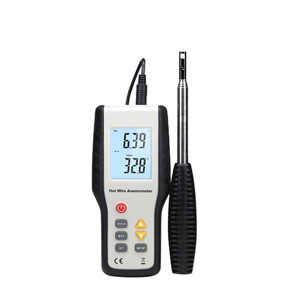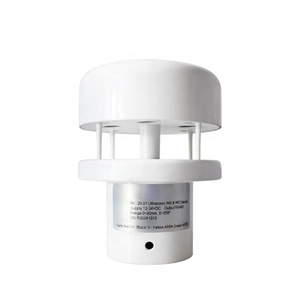4 Anemometer Types For Measuring Wind Speed
Sun, Jun 26 by ATO.com
The wind speed tester has the test of average wind speed and the test of turbulence component. The thermal anemometer is to test the average wind speed. The methods of testing the average wind speed are thermal, ultrasonic, impeller, and skin dragging tube, but in these methods, the anemometer is using the principle of heat dissipation. Below, a description of these types of anemometers is given.
Thermal type
- This method tests the wind speed by measuring the change in resistance when the sensor is cooled by the wind while it is energized. The information on wind direction cannot be obtained.
- The ATO 0.1~25m/s hot-wire anemometer is a thermal anemometer, which is widely used as a standard anemometer product because it is easy to carry and has a high cost-performance ratio.
- Thermal anemometers are available with platinum wires, electric thermocouples, and semiconductors.
Impeller type
- This method applies the principle of a windmill and tests the wind speed by testing the number of revolutions of the impeller.
- The impeller type is mainly used for meteorological observation, etc.
- Its principle is relatively simple and cheap, but the testing accuracy is low, so it is not suitable for testing micro wind speed and small wind speed changes.
- The popularity is low.
Ultrasonic type
- This method measures the time to transmit ultrasonic waves over a certain distance, and the arrival time is delayed by the wind, thus measuring the wind speed. ATO offers ultrasonic anemometers with 40m/s, 60m/s, and 70m/s.
- The wind direction can be known when the third power is applied.
- Because of the large size of the tade sensor section, turbulence may occur around the test section, causing irregularities in the flow. The use is limited.
- Low penetration.
Pitot tube type
- Pitot tube type means that there are small holes in the front side of the flow surface that form a right angle direction with it, and there are thin tubes hidden inside that extract pressure from their respective holes respectively, and the wind speed can be known by testing its pressure difference.
- Pitot tube type is simpler and cheaper in principle, but it must be set at right angles to the flow surface, otherwise, it cannot be tested properly. Not suitable for general use.
- It is not used as an anemometer, but as a wind speed correction for the high-speed domain.

